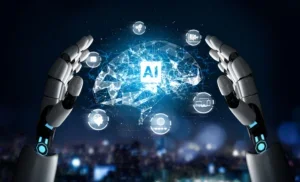The Impact of Artificial Intelligence on Translation Services
Artificial Intelligence (AI) has transformed numerous industries, and the translation field of translation services is no exception. With advancements in AI-driven technologies such as machine translation, natural language processing, and automated tools, the landscape of translation has evolved rapidly. In this blog post, we will explore how AI is impacting translation services, the benefits it brings, the challenges it poses, and the future outlook for human translators in an AI-driven world.
1. AI-Powered Machine Translation
Machine Translation (MT) tools, such as Google Translate and DeepL, have become increasingly sophisticated due to the integration of AI and deep learning algorithms. These tools are capable of translating text at lightning speed, providing real-time translations that are useful for everyday communication and general content.
- Advantages:
- Speed and Efficiency: AI-driven translation tools can process large volumes of text quickly, making them ideal for time-sensitive projects.
- Cost-Effectiveness: Automated translations can be more affordable compared to human translation services, especially for simple or non-critical content.
- Limitations:
- Lack of Contextual Understanding: AI translations may miss cultural nuances, idiomatic expressions, and the intended tone of the text.
- Inaccuracy in Specialized Fields: Machine translation tools struggle with technical, medical, or legal documents where precise terminology and contextual understanding are essential.
2. Augmented Translation: Human + AI Collaboration
Rather than replacing human translators, AI has become a powerful tool that enhances their capabilities. The concept of augmented translation combines human expertise with AI-driven technology to produce high-quality translations more efficiently.
- Benefits of Collaboration:
- Enhanced Productivity: Translators can use AI tools to automate repetitive tasks, such as translating simple phrases, allowing them to focus on more complex and nuanced content.
- Consistency and Quality Assurance: AI tools, like translation memory and terminology management systems, help maintain consistency in terminology across large projects.
- Role of Human Translators:
- Human translators are still essential for editing and proofreading AI-generated translations. They provide cultural and contextual insights that machines cannot replicate, ensuring the final output is accurate and culturally appropriate.
3. AI in Localization
Localization, which involves adapting content to suit the cultural and regional preferences of a target audience, benefits from AI advancements as well. AI-driven tools can analyze cultural patterns, user behavior, and preferences to automate aspects of the localization process.
- Impact on E-commerce and Marketing: AI can help businesses localize their websites, product descriptions, and marketing campaigns for different markets quickly. However, the cultural sensitivity and creativity required for effective localization still rely on human expertise.
4. Challenges and Ethical Concerns
Despite its advantages, the use of AI in translation services raises several challenges and ethical concerns.
- Data Privacy and Security: AI-driven translation platforms often require large amounts of data to improve their algorithms. This raises concerns about data privacy, especially when dealing with confidential or sensitive documents.
- Bias and Fairness: AI systems can inherit biases from the data they are trained on, leading to translations that may reinforce stereotypes or use inappropriate language.
- Job Displacement: There is an ongoing debate about whether AI will reduce the demand for human translators. While AI has automated some aspects of translation, the need for skilled human translators remains, particularly in specialized fields.
5. Future Trends in AI and Translation
The future of AI in translation services looks promising, with advancements in neural machine translation (NMT) and multilingual AI models. As these technologies continue to evolve, we can expect:
- Improved Contextual Understanding: AI will become better at understanding context, making translations more accurate and culturally aware.
- Personalized Translation Services: AI may offer more personalized translation experiences, catering to the specific needs and preferences of users.
- Integration with Other Technologies: AI-driven translation tools will likely be integrated with other technologies, such as augmented reality (AR) and virtual reality (VR), to enhance multilingual communication.
Conclusion
AI is reshaping the translation industry by making translation services faster, more efficient, and widely accessible. However, it cannot replace the cultural awareness, empathy, and creativity that human translators bring to the table. The future of translation lies in a collaborative approach, where AI tools support and enhance human capabilities. Businesses and translation professionals who embrace this partnership will be well-positioned to thrive in an increasingly globalized world.


Post Comment